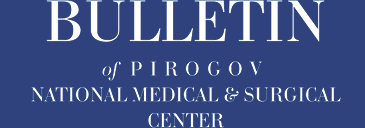Authors
Glushkov N.I., Puzdryak P.D., Ivanov M.A., Bondarenko P.B., Samko K.V., ZHdanovich K.V., Ponikarova N.YU., Tigrov I.V.
North-Western State Medical University named after I.I. Mechnikov, Saint-Petersburg
Abstract
The aim of the study was to evaluate the effectiveness of rehabilitation program in patients at a long time after multilevel peripheral arterial disease (MPAD) revascularization surgery.
Materials and methods. The results of MPAD revascularization in 129 patients were analyzed. We formed three group of patients: 60 patients underwent hybrid surgery (HS); 27 — endovascular revascularization (ER); 42 — open operations (OO). Patients were monitored at 12, 24, and 36 months after surgery. Depending on the implementation of the proposed rehabilitation program, all patients were divided into two groups: 70 carried out the required amount of training (main group), 59 patients did not adhere to the rehabilitation program (control group). The following indicators were evaluated: painless walking distance (PWD), maximum walking distance (MWD), ankle-brachial index (ABI), limb salvage, primary patency of the operated segment, frequency of critical ischemia occurrence, adverse cardiovascular events, quality of life according to the EQ-5D questionnaire and mortality.
Results. The best level of primary patency in the long-term was found in the group HS (71.6% in comparison with 30.4% and 28.6% — OO and ER, respectively). The maximum walking distance was recorded in the main group in patients after ER and HS (516 and 509 meters, respectively); this indicator was significantly less in non-compliant patients (control group) — 290 and 330 meters, respectively (p <0.05). Analysis of the EQ-5D questionnaire showed the absence of problems for all points in the HS group, while serious problems were registered in patients after OO. Optimal quality of life indicators in patients performing the rehabilitation program recorded in the HS.
Conclusions. Hybrid reconstruction improves patients quality of life. The implementation of the rehabilitation program is an important condition for improving the patients quality of life. Training walking increases the distance of painless walking 36 months after revascularization in patients suffering from MPAD in all studied groups.
Keywords: peripheral atherosclerosis; rehabilitation; training walking; revascularization.
References
1. Imori Y, Akasaka T, Ochiai T, Oyama K, Tobita K, Shishido K, Nomura Y, Yamanaka F, Sugitatsu K, Okamura N, Mizuno S, Arima K, Suenaga H, Murakami M, Tanaka Y, Matsumi J, Takahashi S, Tanaka S, Takeshita S, Saito S. Co-existence of carotid artery disease, renal artery stenosis, and lower extremity peripheral arterial disease in patients with coronary artery disease. The American Journal of Cardiology. 2014; 113(1): 30–5. doi: 10.1016/j.amjcard.2013.09.015.
2. Dörenkamp S, Mesters I, de Bie R, Teijink J, van Breukelen G. Patient Characteristics and Comorbidities Influence Walking Distances in Symptomatic Peripheral Arterial Disease: A Large One-Year Physiotherapy Cohort Study. PLoS One. 2016; 11; 11(1): e0146828. doi: 10.1371/journal.pone.0146828.
3. Gardner AW, Katzel LI, Sorkin JD, Goldberg AP. Effects of long-term exercise rehabilitation on claudication distances in patients With peripheral arterial disease: a randomized controlled trial. Journal of Cardiopulmonary Rehabilitation. 2002; 22(3): 192–8. doi:10.1097/00008483-200205000-00011.
4. Bouwens E, Klaphake S, Weststrate KJ, Teijink JA, Verhagen HJ, Hoeks SE, Rouwet EV. Supervised exercise therapy and revascularization: Single-center experience of intermittent claudication management. Vascular Medicine. 2019; 24(3): 208–215. doi: 10.1177/1358863X18821175.
5. Klaphake S, de Leur K, Thijsse W, Ho GH, De Groot HGW, Veen E J, Haans DHAW, van der Laan L. Reinterventions following endovascular revascularization in elderly with critical limb ischemia; an observational study. Ann Vasc Surg. 2018. 53: 171–176. doi:10.1016/j.avsg.2018.04.021.
6. Gardner AW, Katzel LI, Sorkin JD, Goldberg AP. Effects of long-term exercise rehabilitation on claudication distances in patients With peripheral arterial disease: a randomized controlled trial. Journal of Cardiopulmonary Rehabilitation. 2002; 22(3): 192–8. doi:10.1097/00008483-200205000-00011.
7. Walker RD, Nawaz S, Wilkinson CH, Saxton JM, Pockley AG, Wood RF. Influence of upper- and lower-limb exercise training on cardiovascular function and walking distances in patients with intermittent claudication. Journal of Vascular Surgery. 2000; 31(4), 662–669. doi:10.1067/mva.2000.104104.
8. Falk J, Haaf HG, Brünger M. Rehabilitation of Patients with Peripheral Arterial Disease in the Context of Guideline Recommendations. Rehabilitation (Stuttg). 2019; 58(4): 225–233. doi: 10.1055/a-0620-6911.
9. Izquierdo-Porrera AM, Gardner AW, Powell CC, Katzel LI. Effects of exercise rehabilitation on cardiovascular risk factors in older patients with peripheral arterial occlusive disease. Journal of Vascular Surgery. 2000; 31(4): 670–677. doi:10.1067/mva.2000.104422.
10. Perkins JM, Collin J, Creasy TS, Fletcher EW, Morris PJ. Exercise training versus angioplasty for stable claudication. Long and medium term results of a prospective, randomised trial. Eur J Vasc Endovasc Surg. May, 1996; 11(4): 409–13. doi: 10.1016/s1078-5884(96)80171-7.
11. Seals DR, Hagberg JM, Hurley BF, Ehsani AA, Holloszy JO. Effects of endurance training on glucose tolerance and plasma lipid levels in older men and women. JAMA. 1984; 252(5): 645–9.
12. Glushkov NI, Ivanov MA, Puzdryak PD, et al. Metabolic disorder and outcomes of reconstructive interventions in patients with peripheral arterial disease. Herald of North-Western State Medical University named after I.I. Mechnikov. 2019; 11(3): 33–40. (In Russ). doi: org /10.17816/mechnikov201911333-40.


